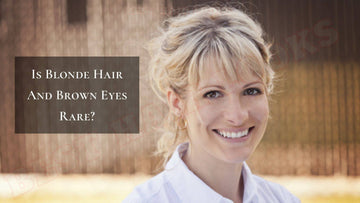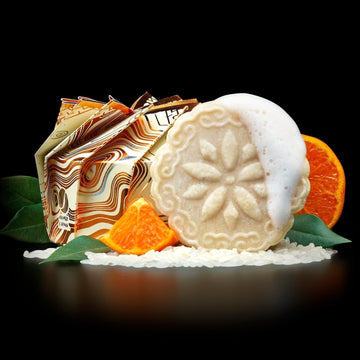Is blonde hair and brown eyes rare? Delve into the genetics behind the captivating rarity of blonde hair and brown eyes. Explore the interplay of genes, global distribution, and notable examples of this unique trait.
In the grand tapestry of human diversity, where a myriad of traits intertwine to create a mesmerizing mosaic of possibilities, certain combinations stand out as captivating enigmas.
Among these, the pairing of blonde hair and brown eyes holds a unique allure, a rarity that sparks curiosity and admiration.
To understand the origins of this uncommon beauty, we must delve into the fascinating realm of genetics, where the blueprints of our physical traits reside.
Page Contents
Is Blonde Hair And Brown Eyes Rare?
Yes, the combination of blonde hair and brown eyes is considered a rare occurrence. While blonde hair is generally a recessive trait, requiring both parents to carry the gene for its manifestation, brown eyes are a dominant trait, needing only one parent to carry the gene for its expression.
This specific combination of genetic instructions is relatively uncommon, making the pairing of blonde hair and brown eyes a captivating and unique trait. Estimates suggest that only 1-2% of the world’s population exhibits this unique combination.

Unlocking the Secrets of Hair and Eye Color: A Journey into Genetics
The captivating contrast of sun-kissed locks and deep, chocolatey eyes is a sight to behold, but its occurrence is far from common.
To unravel this mystery, we embark on a journey into the intricate world of genetics, where the secrets of our physical traits lie encoded within our DNA.
Melanin, a pigment produced by specialized cells called melanocytes, plays a pivotal role in determining our hair and eye colors.
The amount and type of melanin produced dictate the shade of our tresses and the depths of our gaze.
This intricate process is governed by a set of genes inherited from our parents, each contributing a unique set of instructions for melanin production.
The Genetics of Hair Color: A Delicate Dance of Melanin
When it comes to hair color, two main types of melanin take center stage: eumelanin, responsible for darker shades, and pheomelanin, responsible for lighter hues.
The genes responsible for hair color orchestrate a delicate dance between these melanin types, ultimately dictating whether one’s hair will be blonde, brunette, black, or a fiery red.
The gene known as MC1R plays a crucial role in this process, acting as a switch that determines the ratio of eumelanin to pheomelanin.
Variations in this gene can lead to different hair colors, with certain variants associated with blonde hair.
However, the expression of hair color is not solely determined by MC1R, but rather a complex interplay of multiple genes, each contributing to the final outcome.

Eye Color: A Reflection of Melanin Concentration
Eye color, on the other hand, is primarily determined by the amount of melanin in the iris, the captivating canvas that lends color to our eyes.
Higher concentrations of melanin result in darker shades like brown and black, while lower concentrations lead to lighter hues like blue and green, each shade a reflection of our genetic tapestry.
The genes responsible for eye color influence the production and distribution of melanin in the iris. Variations in these genes lead to different eye colors, with brown eyes being the most common globally.
Blue eyes, on the other hand, are a result of reduced melanin production, allowing the underlying blue-gray stroma of the iris to become visible.
A Global Perspective: Mapping the Distribution of Blonde Hair and Brown Eyes
Blonde hair, a beacon of radiance, finds its stronghold in Northern European populations, with estimates suggesting that around 10% of individuals in these regions bear the gift of naturally blonde tresses.
This prevalence is thought to be due to a combination of genetic factors and environmental adaptations, as lighter hair may have provided an advantage in regions with lower levels of sunlight.
Brown eyes, on the other hand, reign supreme as the most common eye color worldwide, with approximately 79% of the global population possessing this captivating trait.
This widespread distribution is attributed to the dominance of the brown eye gene, which means that only one copy of the gene is needed for brown eyes to manifest.
The Genetics of Rarity: Unveiling the Mystery Behind Blonde Hair and Brown Eyes
The rarity of blonde hair and brown eyes stems from a captivating interplay of genes, a delicate dance that determines the expression of these traits.
While blonde hair is generally considered a recessive trait, requiring both parents to carry the gene for its manifestation, brown eyes are a dominant trait, needing only one parent to carry the gene for its expression.
For an individual to inherit the mesmerizing combination of blonde hair and brown eyes, they must inherit the recessive gene for blonde hair from both parents and the dominant gene for brown eyes from at least one parent.
This specific combination of genetic instructions is relatively uncommon, explaining the rarity of this captivating trait.
Celebrating the Unique: Notable Examples of Blonde Hair and Brown Eyes
Despite its rarity, the combination of blonde hair and brown eyes has graced the faces of many notable individuals throughout history and in modern times.
From the captivating allure of Marilyn Monroe, whose blonde locks and deep brown eyes captivated audiences worldwide, to the striking beauty of Brad Pitt, whose golden tresses and soulful brown gaze have mesmerized generations, this unique pairing has left an indelible mark on our collective consciousness.
Other notable figures with this rare combination include supermodel Gisele Bündchen, whose sun-kissed hair and mesmerizing brown eyes have graced countless magazine covers, and actor Orlando Bloom, whose blonde tresses and captivating brown eyes have enchanted audiences on both stage and screen.
These individuals, among many others, embody the unique beauty and intrigue of blonde hair and brown eyes, a testament to the endless diversity of human genetics.
Conclusion: A Genetic Mosaic of Beauty and Intrigue
The rarity of blonde hair and brown eyes serves as a testament to the intricate tapestry of human genetics, a testament to the endless diversity that defines our species.
This unique combination, a result of a specific interplay of genes, stands as a reminder of the endless possibilities that emerge from our genetic makeup.
As we continue to unravel the complexities of human genetics, we uncover a deeper appreciation for the beauty and intrigue of traits like blonde hair and brown eyes.
These rare pairings serve as captivating reminders of the endless possibilities that emerge from our genetic makeup, each individual a mosaic of genetic artistry.
In a world where diversity reigns supreme, the captivating rarity of blonde hair and brown eyes serves as a beacon of genetic uniqueness, a testament to the endless possibilities that lie within the human genome.
As we celebrate the diversity of human traits, we also celebrate the uniqueness of each individual, a masterpiece of genetic artistry, a symphony of possibilities.
How rare is the combination of blonde hair and brown eyes?
The combination of blonde hair and brown eyes is relatively rare, with estimates suggesting that only 1-2% of the world’s population exhibits this unique pairing.
Why is blonde hair and brown eyes so rare?
The rarity of blonde hair and brown eyes stems from the specific combination of genes required for this trait. Blonde hair is generally considered a recessive trait, while brown eyes are a dominant trait. This means that an individual must inherit the recessive gene for blonde hair from both parents and the dominant gene for brown eyes from at least one parent to have this combination.
What are some examples of famous people with blonde hair and brown eyes?
Several famous people have this rare combination, including Marilyn Monroe, Brad Pitt, Gisele Bündchen, and Orlando Bloom.
What role does melanin play in determining hair and eye color?
Melanin, a pigment produced by specialized cells called melanocytes, plays a crucial role in determining hair and eye color. the amount and type of melanin produced dictate the shade of hair and eyes.
How does genetics influence hair and eye color?
A set of genes inherited from our parents governs the production of melanin, which in turn determines hair and eye color. Variations in these genes lead to different hair and eye colors.
What is the most common eye color worldwide?
Brown eyes are the most common eye color worldwide, with approximately 79% of the global population possessing this trait.
What is the most common hair color worldwide?
Black hair is the most common hair color worldwide, followed by brown hair. Blonde hair is less common, with estimates suggesting that around 10% of individuals in Northern European populations have naturally blonde hair.
Can two brown-eyed parents have a child with blonde hair and brown eyes?
Yes, it is possible for two brown-eyed parents to have a child with blonde hair and brown eyes if both parents carry the recessive gene for blonde hair.
Is blonde hair and brown eyes considered more attractive?
Beauty is subjective and varies across cultures and individuals. However, the rarity of blonde hair and brown eyes can make this combination stand out and be perceived as attractive.
What does the rarity of blonde hair and brown eyes tell us about human genetics?
The rarity of blonde hair and brown eyes highlights the intricate tapestry of human genetics and the endless diversity that defines our species. It demonstrates how specific combinations of genes can lead to unique and captivating traits.





